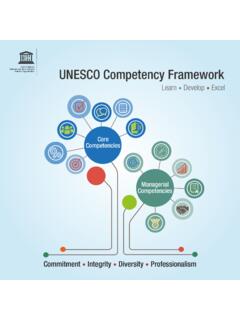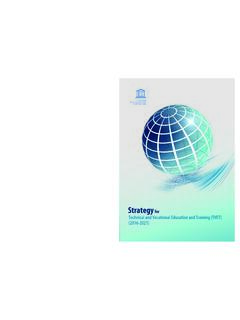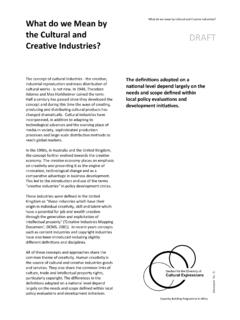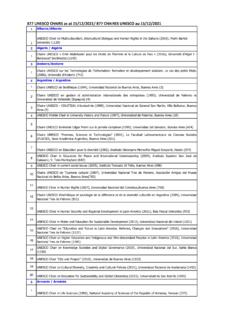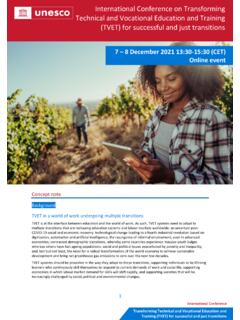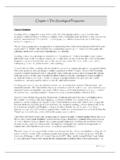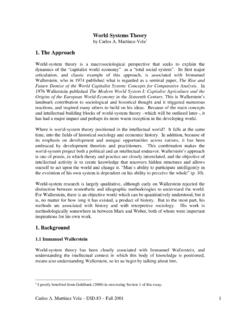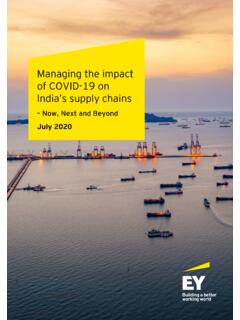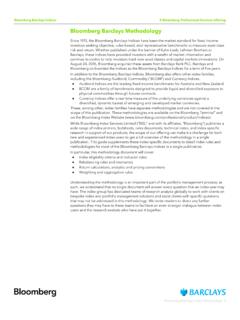Transcription of World inequality report - UNESCO
1 InequalityWorldreportfaCundo alVaredo luCas ChanCel thomas piketty emmanuel saez Gabriel zuCmanCoordinated byWorld inequality report fellows:The report ultimately relies on the data collection, production and harmonization work carried out by more than a hundred fellows located over five continents and contributing to the World Wealth and Income Database (visit for more information). Analyses presented in the report reflect the views of the report s editors and not necessarily those of fellows. Creative Commons Licence - CC BY-NC-SA World inequality Lab, 2017It is strictly prohibited to translate, transfer or reproduce this report into any other language without the permission of the : Grand Kr , BerlinCover artwork based on a photograph by Dimitri Vervitsiotis / Getty ImagesThis report emphasizes recent research articles written by: Facundo AlvaredoLydia AssouadAnthony B.
2 AtkinsonCharlotte BartelsThomas BlanchetLucas ChancelLuis Est vez-BauluzJuliette FournierBertrand GarbintiJonathan Goupille-LebretClara Martinez-ToledanoSalvatore MorelliMarc MorganDelphine Nougayr deFilip NovokmetThomas PikettyEmmanuel SaezLi YangGabriel ZucmanWritten and coordinated by:Facundo AlvaredoLucas ChancelThomas PikettyEmmanuel SaezGabriel ZucmanGeneral coordinator:Lucas ChancelReport research team:Thomas BlanchetRichard Clarke Leo CzajkaLuis Est vez-BauluzAmory GethinWouter LeendersIn memory of Tony Atkinson (1944 2017)Codirector of the World top incomes database (2011-2015) and of (2015-2017) Contents ..4exeCutiVe summary ..7introduCtion ..22 Part ithe proJeCt and the measurement of eConomiC inequality ..24 Part iitrends in global inCome inequality .
3 global income inequality dynamics .. trends in income inequality between countries .. trends in income inequality within countries .. united states .. france .. China .. russia .. india .. middle east .. brazil .. south africa ..145 Part iiipubliC Versus priVate Capital dynamiCs .. Wealth-income ratios across the World ..156 7he evolution oI aggregate Zealth-income ratios in developed countries ..165 &omparing the e[periences oI Iormer communist states ..174 &apital Accumulation, 3rivate 3roperty, and 5ising IneTuality in &hina .. the rise of private property in russia ..187 ContentsWorld inequality report 20184 Part iVtrends in global Wealth inequality ..196 global Zealth ineTuality: trends and proMections.]
4 198 &omparing trends in personal Zealth ineTuality across the Zorld .. united states .. france .. spain ..230 8nited Kingdom ..241 Part VtaCklinG eConomiC inequality ..248 :hat is the Iuture oI global income ineTuality" ..250 7acNling rising ineTuality at the top: the role oI progressive ta[ation ..256 7a[ policy in a global environment: the case Ior a global financial register ..263 7acNling ineTuality at the bottom: the need Ior more eTual access to education and good paying Mobs ..268 A message Irom the past: let governments invest in the Iuture ..278 ConClusion ..286appendix ..291 World inequality report 20185 ContentsexeCutiVe summaryi. what is the aim of the World inequality report 2018? The World inequality report 2018 relies on a cutting-edge methodology to measure income and wealth inequality in a systematic and transparent manner.]]
5 By developing this report , the World inequality Lab seeks to fill a democratic gap and to equip various actors of society with the necessary facts to engage in informed public debates on inequality . the objective of the World inequality report 2018 is to contribute to a more inIormed global democratic debate on economic inequality by bringing the latest and most complete data to the public discussion. economic inequality is widespread and to some e[tent inevitable It is our belieI, hoZever, that iI rising ineTuality is not prop-erly monitored and addressed, it can lead to various sorts of political, economic, and social catastrophes. 2ur obMective is not to bring everyone into agreement regarding ineTuality this Zill never happen, for the simple reason that no single scientific truth e[ists about the ideal level of inequality , let alone the most socially desirable mi[ oI policies and institutions to achieve this level.]]]
6 Ultimately, it is up to public deliberation, and political institutions and their processes to maNe these diIficult deci-sions. but this deliberative process requires more rigorous and transparent inIormation on income and wealth. to equip citizens to make such decisions, we also seek to relate macroeconomic phenomenon such as nationalization and privatization policies, capital accumulation, and the evolution of public debt to micro-economic trends in inequality focused on indi-viduals earnings and government transIers, personal wealth, and debt. 5econciling macro and microeconomic ineTuality data is not a straightIorZard e[ercise given that many countries do not publicly release, or may not even produce, detailed and consistent income and wealth inequality statistics.]
7 Standard measures of inequality often rely on household surveys, which routinely underestimate the income and wealth of individuals at the top of the social ladder. to overcome current limitations, we rely on a groundbreaNing methodology Zhich combines in a systematic and transparent manner all data sources at our disposal: national income and wealth accounts including, Zhen possible, oIIshore Zealth estimates household income and Zealth surveys fiscal data coming Irom ta[es on income inheritance and Zealth data Zhen they e[ist and Zealth ranNings The series presented in this report rely on the collective efforts of more than a hundred researchers, covering all conti-nents, who contribute to the database. All the data are available online on and are fully repro-ducible, allowing anyone to perform their own analysis and make up their own mind about summaryWorld inequality report 20188ii.]]
8 What are our new findings on global inCome inequality ? We show that income inequality has increased in nearly all World regions in recent decades, but at different speeds. The fact that inequality levels are so different among countries, even when countries share similar levels of develop-ment, highlights the important roles that national policies and institutions play in shaping inequality . Income inequality varies greatly across World regions. It is lowest in europe and highest in the middle east. IneTuality Zithin Zorld regions varies greatly In , the share oI total national income accounted for by just that nation s top 10% earners (top 10% income share) was 37% in europe, 41% in China, 46% in russia, 47% in us-Canada, and around b in sub-6aharan AIrica, Bra]il, and india.
9 In the middle east, the World s most uneTual region according to our estimates, the top capture oIbnational income (Figure E1). In recent decades, income inequality has increased in nearly all countries, but at different speeds, suggesting that institutions and policies matter in shaping inequality . since 1980, income inequality has increased rapidly in north america, China, India, and 5ussia IneTuality has groZn moderately in europe (Figure e2a). from a broad historical perspective, this increase in ineTuality marNs the end oI a postZar egali-tarian regime Zhich tooN diIIerent Iorms in these regions 0%10%20%30%40%50%60%70%37%41%46%47%54%55 %55%61%Middle EastIndiaBrazilSub-SaharanAfricaUS-Canad aRussiaChinaEuropeIn 2016, 37% of national income was received by the Top 10% in Europe against 61% in the : (2017).
10 See for data series and of national income (%)37%41%46%47%54%55%55%61% Figure e1 top 10% national income share across the World , 2016 World inequality report 20189exeCutIve summary 7here are e[ceptions to the general pattern. in the middle east, sub-saharan africa, and brazil, income inequality has remained relatively stable, at e[tremely high levels Figure e2b +aving never gone through the postZar egalitarian regime, these regions set the Zorld ineTuality Irontier the diversity of trends observed across countries since 1980 shows that income inequality dynamics are shaped by a variety oI national, institutional and political conte[ts this is illustrated by the different trajec-tories followed by the former communist or highly regulated countries, &hina, India, and russia (Figure e2a and b).]]]

